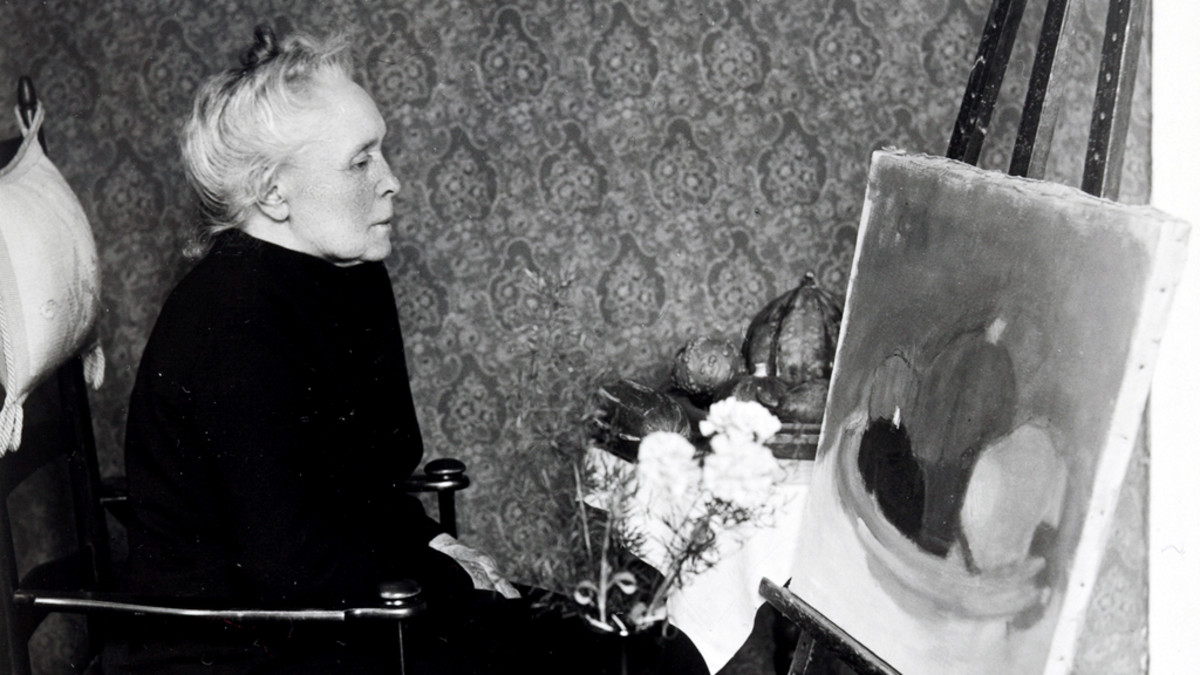Ρόμπερτ ντε Νίρο προς μεγιστάνες του πλούτου: «Αν μπορείτε να ξοδέψετε δισεκατομμύρια για να φτιάξετε πυραύλους, εφαρμογές και εικονικούς κόσμους, μπορείτε να ξοδέψετε ένα κλάσμα από αυτό για να ταΐσετε παιδιά και να ανοικοδομήσετε κοινότητες. Θέλετε να αυτοαποκαλείστε οραματιστές; Τότε αποδείξτε το με συμπόνια, όχι με δελτία τύπου»
Σάββατο, Αυγούστου 04, 2018
Η ζωγράφος που άνοιξε το δρόμο του μοντερνισμού στη Φινλανδία
"The Finnish artist Helene Schjerfbeck (1862-1946) painted
mainly works depicting herself, other women, children, & the home.
Born in Helsinki, she began her training at the Finnish Fine Art
Association's Drawing School as a precocious 11-year-old.
Periods of study in Paris during the 1880s gave her the chance to see
the works of Pierre Puvis de Chavannes (1824-1898), Edouard Manet
(1832-1883), Paul Cézanne (1839-1906), Berthe Morisot (1841-1895), &
Jules Bastien-Lepage (1848-1884). During the decade, she also traveled
to Florence, St Petersburg, Vienna, & Great Britain. At the Paris
Exhibition of 1889, the 27-year old artist was awarded a bronze medal
for her painting ‘Le Convalescent’, which shows Impressionist influence.
A Finnish grant had first allowed her to travel to Paris in 1880. There
she studied with Léon Bonnat & Jean-Léon Gérôme at Madame Trélat de
Vigny's painting studio for ladies. In 1881, she went to the private
Académie Colarossi, where she was taught by Raphael Colin (1850-1916)
& Gustave Courtois (1852-1924), who called her "une de mes
meilleures élèves" in a letter of recommendation characterizing her as
"très laborieuse" & as one of the most talented students,
"certainement une des mieux douées." Until 1890, she returned frequently
to Paris; & in 1884, she had her own studio there, which she longed
for again as she aged.
Between 1881 & 1884, she journeyed to Pont-Aven & Concarneau in
Brittany with fellow female painters Marianne Preindelsberger
(1855-1927) & Maria Wiik (1853-1928). Pont-Aven had attracted
artists as early as the 1860s. The 3 Finnish women artists were there
before Paul Gauguin (1848-1903), who arrived in Brittany in July 1886.
It became a trendy venue for plein air painters from the late 1880s
through early 1890s. In Brittany, Schjerfbeck met an English artist, to
whom she was briefly engaged. But when the relationship ended, she
traveled to St. Ives in Cornwall.
In the 1890s she simplified her style, eliminating background detail and
reducing her palette. These stylistic changes are seen in many of the
portraits she painted of herself, her mother, and others.Schjerfbeck’s
work shows a highly individual development, transforming gradually from
melancholy, late 19th-century academic Realism to her own very personal
style tending towards abstract Expressionism displaying perfectly
balanced colors.
Εγγραφή σε:
Σχόλια ανάρτησης (Atom)
Ντόρα Γιαννακοπούλου : αλησμόνητη !...
Πέθανε σε ηλικία 88 ετών η Ντόρα Γιαννακοπούλου Η Ντόρα Γιαννακοπούλου είχε παράλληλες εμφανίσεις στο τραγούδι και στο θέατρο - Έφυγε από ...

-
Χαραμοφάης (Με τον μαλάκα) ;Στίχοι: Γιάννης Μηλιώκας Μουσική: Franco Corliano Χαραμοφάης Με τον μαλάκα Γιάννης Μηλιώκας Έχω θυμό με...
-
῎ ΜΙΑ ΧΡΥΣΗ ΜΑΘΗΣΙΑΚΗ ΑΡΧΗ, ΠΟΥ ΑΓΝΟΕΙΤΑΙ ΑΠΟ ΤΟΥΣ ΑΓΧΩΤΙΚΟΥΣ ΝΕΟΕΛΛΗΝΕΣ ΓΟΝΕΙΣ ΚΑΙ ΑΠΟ ΤΟ ΗΛΙΘΙΟ ΥΠΟΥΡΓΕΙΟ ΠΑΙΔΕΙΑΣ Ηδη δέ τινας ἐγὼ εἶδο...


 From about 1902 her delicate health began to deteriorate (although she
lived into her 80s); and she adopted a solitary life living with her
mother at Hyvinkaa, almost forgotten, developing a much more simplified
style. During this early period alone, her work was dominated by
domestic scenes, featuring women and children engaged in reading or
embroidery.
As details gradually disappeared from her paintings, they gained
increasing depth, approaching an abstract technique which was far ahead
of her time.
After this interval of semi-obscurity, Schjerfbeck made a second
breakthrough in 1917 with her first solo exhibition, mounted by the art
dealer Gösta Stenman in Helsinki. Besides early works, it included
recent paintings which, like works of earlier artists such as Vincent
van Gogh and Paul Gauguin, were apparently inspired by Japanese masters.
After her work was exhibited in 1937, she was recognized as one of the
pioneers of modernism in Finland."
From about 1902 her delicate health began to deteriorate (although she
lived into her 80s); and she adopted a solitary life living with her
mother at Hyvinkaa, almost forgotten, developing a much more simplified
style. During this early period alone, her work was dominated by
domestic scenes, featuring women and children engaged in reading or
embroidery.
As details gradually disappeared from her paintings, they gained
increasing depth, approaching an abstract technique which was far ahead
of her time.
After this interval of semi-obscurity, Schjerfbeck made a second
breakthrough in 1917 with her first solo exhibition, mounted by the art
dealer Gösta Stenman in Helsinki. Besides early works, it included
recent paintings which, like works of earlier artists such as Vincent
van Gogh and Paul Gauguin, were apparently inspired by Japanese masters.
After her work was exhibited in 1937, she was recognized as one of the
pioneers of modernism in Finland."


Δεν υπάρχουν σχόλια:
Δημοσίευση σχολίου